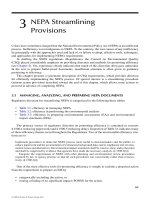Business and society ethics sustainability and stakeholder management 9e chapter 3
Bạn đang xem bản rút gọn của tài liệu. Xem và tải ngay bản đầy đủ của tài liệu tại đây (1.97 MB, 37 trang )
© 2015 Cengage Learning
1
Chapter 3
The Stakeholder
Approach to
Business, Society,
and Ethics
© 2015 Cengage Learning
2
Learning Outcomes
1. Define stake and stakeholder, and describe the
origins of these concepts.
2. Differentiate among the production, managerial, and
stakeholder views of the firm.
3. Differentiate among the three values of the
stakeholder model.
4. Expound upon the concept of stakeholder management.
5. Identify and describe the five major questions that capture
the essence of stakeholder management.
6. Identify the three levels of stakeholder management
capability (SMC).
7. Describe the key principles of stakeholder management.
© 2015 Cengage Learning
3
Chapter Outline (1 of 2)
•
•
•
•
•
•
•
•
•
Origins of the Stakeholder Concept
Who Are Business’s Stakeholders?
Stakeholder Approaches
Three Values of the Stakeholder Model
Key Questions in Stakeholder Management
Effective Stakeholder Management
Developing a Stakeholder Culture
Stakeholder Management Capability
The Stakeholder Corporation
© 2015 Cengage Learning
4
Chapter Outline (2 of 2)
•
•
•
•
•
Principles of Stakeholder Management
Strategic Steps Toward Global Stakeholder Management
Summary
Key Terms
Discussion Questions
© 2015 Cengage Learning
5
Origins of the Stakeholder Concept
Stake •An interest or a share in an undertaking.
Can be categorized as:
An Interest
A Right
Ownership
Legal Right
Moral Right
© 2015 Cengage Learning
66
Stakeholders
Stakeholder -
•Any individual or group who can affect or is
affected by the actions, decisions, policies,
practices, or goals of the organization.
•Stakeholder is a variant of the concept of
stockholder– an investor/owner of businesses.
© 2015 Cengage Learning
7
Who are Business’s Stakeholders?
Stockholders
Customers
Employees
Community
Competitors
Business Stakeholder Groups
Special-Interest
Groups
Suppliers
Society
Media
General
Public
© 2015 Cengage Learning
88
Three Views of the Firm
© 2015 Cengage Learning
9
Production and Managerial Views
of the Firm (fig 3-2 slightly different)
© 2015 Cengage Learning
10
Stakeholder View of the Firm
© 2015 Cengage Learning
11
Primary & Secondary Stakeholders
Primary stakeholders •Have a direct stake in the organization and its
success.
Secondary stakeholders •Have a public or special interest stake in the
organization that is more indirect.
© 2015 Cengage Learning
12
Social Stakeholders
Primary social
stakeholders
Secondary social
stakeholders
Shareholders and investors Government regulators
Employees and managers
Civic institutions
Customers
Social pressure groups
Local communities
Media and academic
commentators
Suppliers and other
business partners
Trade bodies
Competitors
© 2015 Cengage Learning
13
Nonsocial Stakeholders
Primary nonsocial
stakeholders
Secondary nonsocial
stakeholders
Natural environment
Environmental interest
groups
Future generations
Animal welfare
organizations
Nonhuman species
© 2015 Cengage Learning
14
A Typology of Stakeholder Attributes
Legitimacy •Refers to the perceived validity or appropriateness of
the stakeholder’s claim to a stake.
Power •Refers to the ability or capacity of a stakeholder to
produce an effect.
Urgency •Refers to the degree to which the stakeholder’s claim
demands immediate attention or response.
Proximity •The spatial distance between the organization and its
stakeholders.
© 2015 Cengage Learning
15
Stakeholder Typology
© 2015 Cengage Learning
16
Stakeholder Approaches
Strategic approach •Views stakeholders primarily as factors
managers should manage in pursuit of shareholder
profits.
Multifiduciary approach •Views stakeholders as a group to which
management has a fiduciary responsibility.
Stakeholder synthesis approach •Considers stakeholders as a group to whom
management owes an ethical, but not a fiduciary,
obligation.
© 2015 Cengage Learning
17
Three Values
of the Stakeholder Model
© 2015 Cengage Learning
18
Key Questions in
Stakeholder Management
1. Who are our organization’s stakeholders?
2. What are our stakeholders’ stakes?
3. What opportunities and challenges do our
stakeholders present to the firm?
4. What responsibilities (economic, legal,
ethical, and philanthropic) does the firm
have to its stakeholders?
5. What strategies or actions should the firm
take to best address stakeholder challenges
and opportunities?
© 2015 Cengage Learning
19
© 2015 Cengage Learning
20
Who Are Our Stakeholders?
© 2015 Cengage Learning
21
What Are
Our Stakeholders’ Stakes?
To identify them, consider •the nature and legitimacy of a group’s stakes.
•the power of a group’s stakes.
•Sub-groups within a generic group.
© 2015 Cengage Learning
22
What Opportunities and Challenges
do Stakeholders Present?
© 2015 Cengage Learning
23
What Responsibilities Does a
Firm Have to its Stakeholders?
Apply Corporate Social Responsibility •Responsibilities are
•
Economic
•
Legal
•
Ethical
•
Philanthropic
© 2015 Cengage Learning
24
The Stakeholder Responsibility Matrix
© 2015 Cengage Learning
25









